Corfad
Houses within 10km of this house
Displaying 44 houses.
Houses within 10km of Corfad
Displaying 44 houses.
| House name | Description | |
|---|---|---|
| Freame Mount | This house was built in 1772 (date stone confirms this) for Charles Mayne, land agent, on the Cremorne estate. According to a website dedicated to the history of the Mayne family, it was named after the second wife of Thomas Dawson, Hannah Freame, granddaughter of William Penn. The house was occupied by William Douglas in the mid-19th century and valued at £24. It was occupied by George John Levis, a bank official, and family in the early 20th century. |

|
| Mount Carmel | A house built in the early 19th century; the Tithe Applotment Book 1829 records the occupant as John Ker while the Ordnance Survey Field Name Book records Miss Kerr as resident. William Alexander Williams of Mount Carmel, a nephew of Colonel John Ker of Mountain Lodge, took the additional name of Ker in 1846. Mount Carmel was advertised for sale in 1854. It was unoccupied at the time. By the time of Griffith’s Valuation the buildings had a rateable valuation of £7 and the house was occupied by George Bennie and held from Samuel Moorhead. This house continues to be a well maintained residence. |

|
| Mountain Lodge/Farmoyle House | This house was originally known as Mountain Lodge but in more recent times the name Farmoyle House has been used. In the 1830s it was the residence of Colonel John Ker, who was succeeded by his nephew William Alexander Williams. In January 1851 the Mountain Lodge estate of W. A. Williams Ker was advertised for sale in the Encumbered Estates Court, with an estate in county Meath. The mansion house was at the time occupied by Mrs Ann Ker, aged 83 years, widow of the Colonel. It was purchased by George Bennie, who held it in fee at the time of Griffith’s Valuation but was selling it in 1865. By the time the 25 inch Ordnance Survey map was compiled the building was reduced in size and has been further altered in more recent times. The National Inventory of Architectural Heritage records the building as unoccupied. |

|
| Tonnagh House | Lewis records Captain C. Dawson as the proprietor of ‘Tanagh’ in the 1830s. Charles Boyle held the property in fee at the time of Griffith’s Valuation when the buildings were valued at £17.5.0. Home of a branch of the Lucas Clements family in 1901 and of Dr Arthur Robert Moore and family in 1911. The National Inventory of Architectural Heritage states that this house has also been an army barracks and seminary (1948) and that it is now used as an outdoor education centre. http://www.tanaghoutdooreducation.com/ |
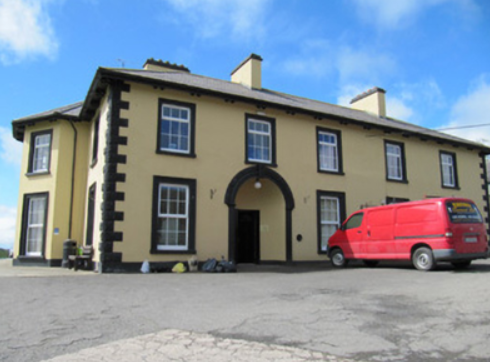
|
| Derryvally | An early 19th century house on the Leslie estate, occupied by Thomas McCullagh, held from Emily Leslie and valued at £16 in Griffith’s Valuation. It was located near a Presbyterian complex comprised of two churches and a school. The house continues to be a residence. |

|
| Milmore/Millmore | A home of the Breakey family in the early 19th century. The Ordnance Survey Field Name Book refers to a gentleman’s seat in the north of the townland of Derry and the house is marked on the first edition 6 inch Ordnance Survey map. Lewis refers to Milmore as the home of ‘the late T. Brunker’. It was occupied by John F. Johnston in the mid-19th century, valued at £22 and held from John Leslie. In 1876, John F. Johnston of Australia owned 143 acres in county Monaghan. Captain Francis Johnston of Milmore House, a veteran of the Peninsular War, died in 1862. A house is still extant at this site. | |
| Lisnaveane House | Home of the Waddell family, it is named on the 1st edition 6 inch Ordnance Survey map (1836) and possibly dates from the late 18th century. It was altered in the 19th century and the yard buildings were extensively extended. At the time of Griffith’s Valuation the buildings were valued at £16. William and Charles Waddell were recorded as the occupants holding the property in fee. Home of Alfred Waddell and family in the early 20th century. |
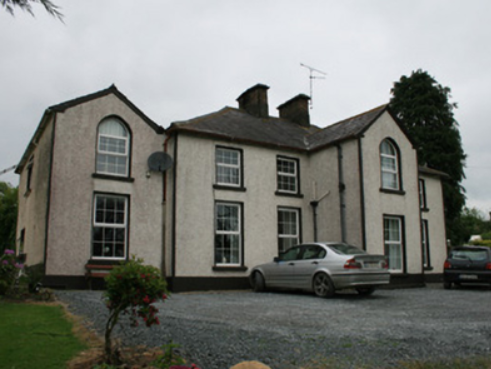
|
| Clover Hill | Another Waddell home, also named on the 1st edition 6 inch Ordnance Survey map (1836). It was occupied by William Waddell in the mid-19th century and held from Charles Waddell. The value of the buildings was £4.10.0. This house was the home of Alexander Waddell and family in the early 20th century. |
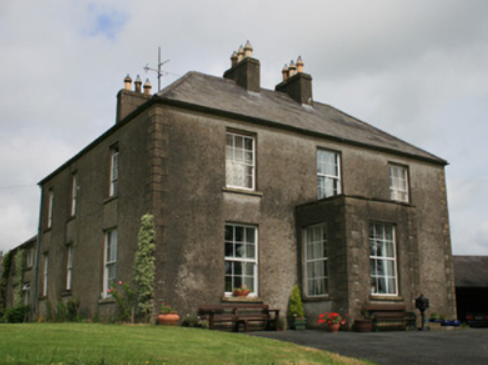
|
| Fairfield | Fairfield was the birthplace of the Reverend John Richard Darley in 1799 who became Bishop of Kilmore in 1874. Facing the shore of Inner Lough it is named on the 1st edition 6 inch Ordnance Survey Map (1836). The Field Name Book states that it was the property of Lord Cremorne let to the former proprietor Mr Corry. Griffith’s Valuation records Lord Cremorne as the occupier holding it in fee. The buildings were valued at £23. By the early 20th century this house was no longer in use. The site is now surrounded by a forest. | |
| Glenburne Cottage | Located on the outskirts of the village of Rockcorry on the Cremorne estate, Samuel Lewis in the 1830s refers to ‘Glenburie Park’ as the residence of C. Stewart Corry. Rebecca Murray was the occupant at the time of Griffith’s Valuation circa 1860 when the buildings were valued at £25. Home of the McFadden family in the early 20th century, no longer extant. | |
| New Park | A house named on the 1st edition 6 inch Ordnance Survey Map (1836), it was occupied by Dacre Hamilton in the 1830s. Home of Thomas Atkinson in the 1850s, valued at £10 and held from Mary Elizabeth and Charlotte O’Brien. Home of the Carleton family in the early 20th century. | |
| Forest View | This house is named on the 1st edition 6 inch Ordnance Survey Map (1836). In the mid-19th century it was occupied by Thomas Dawson and held from Lord Cremorne. The buildings were valued at £12. Partial remains are still visible at this site. | |
| Annaghmakerrig | Annaghmakerrig, now the Tyrone Guthrie Centre, was built in the first decade of the 19th century on the site of a house known as Leesborough, which was the home of the Lee family in the 18th century. In 1802, the property was leased in perpetuity to Dr John Moorhead, a local doctor. Eventually inherited by Martha Moorhead, who married William Power in 1859. William, the son of Tyrone Power, a well-known Irish actor, was knighted in 1865. In 1906, Sir William J.T. Power occupied the mansion house with a rateable valuation of £86.10s. One of William and Martha’s daughters, Norah Power, was the mother of Tyrone Guthrie and it was through his mother that Tyrone inherited Annaghmakerrig. When he died in 1971 he left the house to the Irish State for the benefit of artists, see http://www.tyroneguthrie.ie/about/centre. |
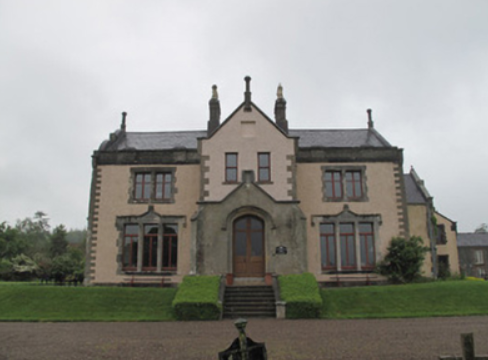
|
| Lough Bawn House | Situated close to the shore of Lough Bawn a building at this location has been home to the Tenison family for three centuries. A family member now runs a forestry farm at Lough Bawn. Much of the original house built circa 1760 was destroyed by fire in the late 18th century. The present house dates from the early 19th century and incorporates some of the earlier building with subsequent enlargements. Lewis records the occupant as W. Tenison and Griffith’s records the house, valued at £30, as unoccupied. Still valued at £30 in 1906 when this house was occupied by Major William Tenison. |

|
| Bowelk | This house is not marked on the first edition 6 inch Ordnance Survey map but is recorded in Griffith’s Valuation when it was occupied by William H. Jackson, a member of a family who had extensive linen manufacturing and corn milling interests in the neighbourhood. It remained in the possession of the Jackson family until the 1920s. Advertised for sale in the Sunday Times on 5 June 2011 after renovation. |
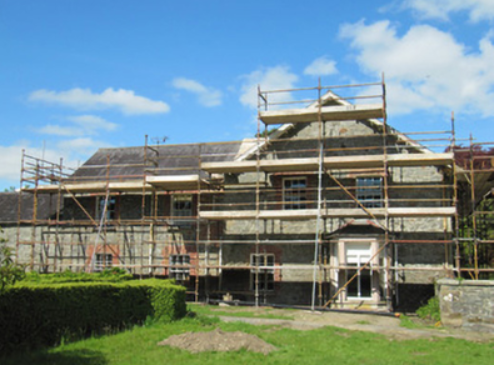
|
| Cremorne House/Cremorne Green | The National Inventory of Architectural Heritage links the building of this house to Alexander Jackson, a member of a family with strong milling interests in the locality. The Ordnance Survey Field Name Book states that it was a neat house of two stories and basement, formerly known as Cremorne Lodge, from having been built on the property of Lord Cremorne. The surveyor continues - it was called ‘Cremorne Green when it became the property of Mr Jackson who was an extensive bleach and linen merchant’. Lewis records J. Jackson as the proprietor. Valued at £12 and occupied by John Jackson at the time of Griffith’s Valuation in the mid-19th century. This house is now a ruin. |
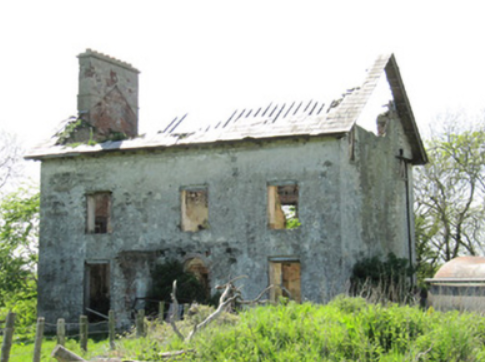
|
| Drumfaldra House | Drumfaldra was the residence John Jackson Cunningham ‘situated on a hill’ in SE of the townland (OS Field Name Book) and is believed to have been built by him (The National Inventory of Architectural Heritage), possibly on the site of an earlier Jackson house. It was associated with a milling enterprise in this townland. By the time of Griffith’s Valuation the house was occupied by George Browne and held from Robert Murdock. A Samuel Brown lived at Drumfaldra until his death in 1911. |
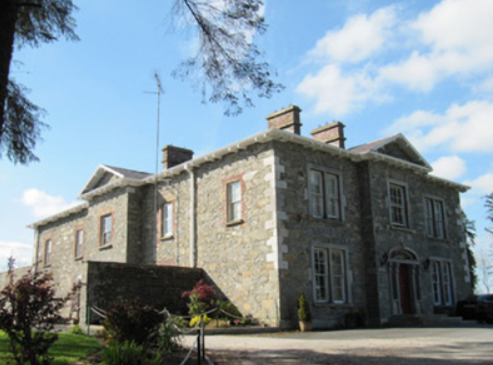
|
| Fairview | Part of this house, situated on the Verner estate, dates from the late 18th century. Fairview is named on the first edition 6 inch Ordnance Survey map. The building was only valued at £4 in Griffith’s Valuation, when it was occupied by William Lockart. It was considerably added to sometime in the mid-19th century. James Lockart occupied the house in 1910 (Ulster Towns Directory 1910). |
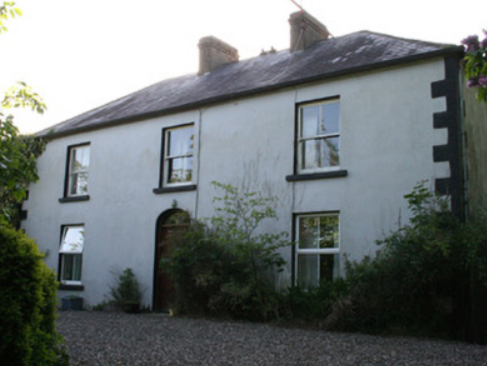
|
| Derrygoony | A house associated with the milling business of Richard Allen Minnett who held the property in fee. It is mentioned by Samuel Lewis in his topographical dictionary of 1837. The buildings, which included a house, offices and flax mill, were valued at £35 in the mid-19th century. The house is named on the 25 inch Ordnance Survey map. In 1901 and 1911, the house was occupied by Patrick Connolly, a farmer and mill proprietor and his family. The site is now planted with trees. | |
| Cumry | Built post 1838, this house was valued at £10 at the time of Griffith’s Valuation and was occupied by John Mullen who held it from Lord Cremorne. A house still exists at this site. | |
| Cumry Lodge | Marked on the first edition 6 inch Ordnance Survey map, this house with a rateable valuation of £12, was occupied by the Reverend John Morell in the mid-19th century and by the Reverend James Morell in 1910 (Ulster Towns Directory 1910). The Morells were Presbyterian ministers in Ballybay, see http://treasureyourexceptions.com/morell.html The property was held from Lord Cremorne. |

|
| Sallyville | The Ordnance Survey Field Name Book describes Sallyville as ‘a cottage with a garden and very extensive orchard at present much out of order, the residence of Mr Breakey’. It was named on the first edition Ordnance Survey map (1836). Griffith’s Valuation records a steward’s house, offices and lodge in Lisnagalliagh, valued at £10, occupied by David R. Goodlatt and held from William Watson. These buildings were at a different location and by the mid-19th century Sallyville appears to be no longer in existence. | |
| Carnaveagh House | Believed to have been built by a member of the Jackson family in the latter half of the 18th century, this three storey house was sold to the Cunningham family in the early 19th century. Lewis records Joseph Cunningham as the proprietor in the 1830s. Valued at £17 in Griffith’s Valuation, it was then occupied by the representatives of Arthur Montgomery who held it from Humphrey Breakey. |

|
| Carnaveagh House | Believed to have been built by a member of the Jackson family in the latter half of the 18th century, this three storey house was sold to the Cunningham family in the early 19th century. Lewis records Joseph Cunningham as the proprietor in the 1830s. Valued at £17 in Griffith’s Valuation, it was then occupied by the representatives of Arthur Montgomery who held it from Humphrey Breakey. |
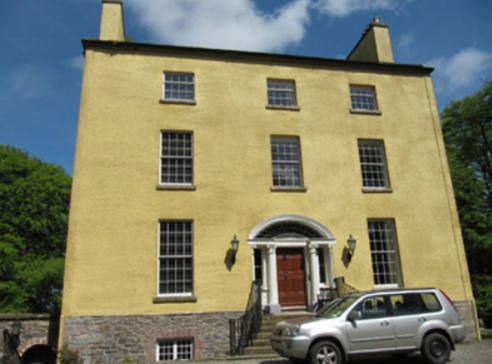
|
| Creeve House/Creevelands | Built in the early 19th century by the Jackson family in the middle of their linen manufacturing enterprise in this townland. Marked on the first edition 6 inch Ordnance Survey map as Creeve House but later known as Creevelands. Lewis records the occupant as S. Cunningham. The rental of 70 acres at Creeve, the estate of Arthur Montgomery was for sale in the Encumbered Estates Court in 1858. The petitioners were Margaret Cunningham and her children. By the time of Griffith’s Valuation Robert Murdock was the occupier of the house, holding the property from Edward Lucas. This house remains a residence with its extensive and well maintained outbuildings. |

|
| Drumbrean Cottage | A late 18th century building, still in use as a residence. Possibly used as a manse house in the mid-19th century when it was the occupied by the Reverend Richard Ross, who held it from the Murray Ker family. |

|
| Drumbrean | This house no longer exists. Lewis records it as the property of T. Phillips and Griffith’s Valuation records Thomas Wright as the occupier, holding from Thomas Phillips. Phillips held the property on a lease renewable for ever from Andre Murray Ker (OS Field Name Book). Thomas Phillips married Mary Martha Emma Whitcombe. | |
| Dartrey House/Dawson's Grove | Dawson Grove, later known as Dartrey House, is marked on the 1st edition 6 inch Ordnance Survey Map (1836). It was built about 1770. Lewis refers to it as a ‘noble mansion’. In 1846, the 3rd Lord Cremorne/1st Earl of Dartrey replaced this house with a large Elizabethan-Revival mansion designed by William Burn. A fire in 1856 destroyed part of the house. At the time of Griffith’s Valuation, circa 1860, the buildings were valued at £105 and still valued at the same in 1906. The family honours became extinct in 1933 following the death of the 3rd Earl and the house was demolished in 1946. |

|
| Dromore Lodge | A house situated on the Cremorne estate, close to Dawson’s Grove and almost on the border with county Cavan. The house is named on the 1st edition 6 inch Ordnance Survey Map (1836). It was occupied in the 1830s by Lieutenant Dawson of the Royal Navy. The building was reduced in size by the time of Griffith’s Valuation when it was rated at £6.10.0. John West Finlay was resident. By the early 20th century it has become the home of the gamekeeper on the Dartrey estate. A building is still located at this site. | |
| Dunraymond | This house with extensive outbuildings and walled garden is named on the 1st edition 6 inch Ordnance Survey Map (1836). Documents in PRONI (D991/1/A/3) record the interest of the Bartley family of nearby Bartley’s Grove in Dunraymond in the early 19th century. Described in the Ordnance Survey Field Name Book as having ‘been greatly improved of late both as to additions being made to the buildings and the formation of plantings’. By the time of Griffith’s Valuation David Ross was resident. He held the property from Newell Atkinson. The buildings were valued at £34. A large complex of farm buildings is now located at this site. | |
| Rockmullan House | Marked on the first edition Ordnance Survey Map (1836). In the mid-19th century occupied by the Rev James J. Rowley and held from Thomas T. Rowley, when the rateable valuation was £12. The home of the Lavelles in the 20th century. | |
| Craig's Castle | This five bay two storied house was built on the Leslie estate in the late 18th century. Occupied by John Carlisle and valued at £14 at the time of Griffith’s Valuation. This house is still extant and known as Hillcrest. |
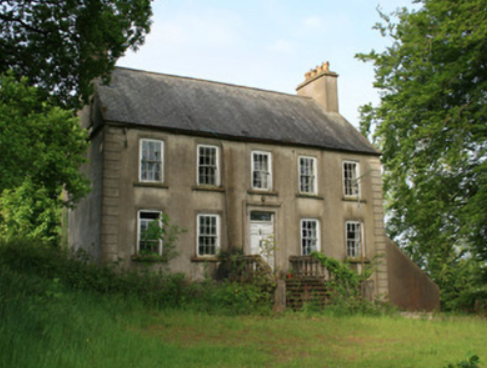
|
| Annaneese | Annaneese house is marked on the first edition 6 inch Ordnance Survey map and named on the 25 inch one. At the time of Griffith’s Valuation it was occupied by John McClatchey and held from Emily Leslie. This house is no longer extant. | |
| Ballybay House | Ballybay House, also known as The Castle, was the home of the Leslie family, designed by John Keane and built in 1830. It was located a short distance from the town. It was described by Lewis in the 1830s as a ‘handsome and beautiful mansion situated on the border of a lake and backed by some extensive plantations’. In the mid-19th century its rateable valuation was £120 and it was the home of Emily Leslie. It later became the home of Edward John Henry Leslie (1890-1966), British Ambassador to Rome. The house was burnt down in 1921. The walled garden and some outbuildings remain. | |
| Ballybay House | Ballybay House, also known as The Castle, was the home of the Leslie family, designed by John Keane and built in 1830. It was located a short distance from the town. It was described by Lewis in the 1830s as a ‘handsome and beautiful mansion situated on the border of a lake and backed by some extensive plantations’. In the mid-19th century its rateable valuation was £120 and it was the home of Emily Leslie. By 1906 this valuation had risen to £140. It later became the home of Edward John Henry Leslie (1890-1966), British Ambassador to Rome. The house was burnt down in 1921. The walled garden and some outbuildings remain. | |
| Ashvale | This house was built in the mid-19th century, after the surveying for the first edition 6 inch Ordnance Survey map and before Griffith’s Valuation, when it was valued at £10 and occupied by James Bradshaw who held it from Robert Ellis. A building is still located at this site. | |
| Agheralane | Both Lewis and Griffith’s Valuation record Agheralane as the residence of Thomas Lucas. It was valued at £28 and held from Joseph Griffith. Occupied by John and Emily Adams at the beginning of the 20th century. The buildings were laid out in a square. | |
| Bushford | Humphry Thomson was living at Bushford in the mid-18th century. In 1814 Henry Thomson is described as resident at Bushford by Ambrose Leet. 'Robert Thompson' was the occupier holding the property in fee from the 1830s at least. The buildings had a rateable valuation of £5 at the time of Griffith's Valuation. [His son] Colonel Robert Thomson was resident in a new building on the other side of the road in the early 20th century. The new house (H657179) had a rateable valuation of £60 in 1906. His widow, Elizabeth Catherine, and her two daughters lived there in 1911. There were two substantial houses in Clossagh Beg by this time, one inhabited at the time of the censuses, by John Forster and later Joseph Ferris Forster and the other by the Thomsons. Walford's (1918) records Robert George Thomson, only son of Major Frith Thomson and nephew of Lieut. Col. Robert Thomson, died 1911, of Bushford. | |
| Bellamont Forest | A red brick house, designed by Sir Edward Lovett Pearce c 1728 for Thomas Coote, younger son of Richard, Baron of Collooney. Originally known as Coote Hill but its name changed in 1767 to Bellamont Forest following Charles Coote’s elevation to the title Earl of Bellamont (2nd creation). Bellamont Forest was inherited by Charles Johnston Coote in 1800. He was one of the illegitimate children of the Earl. Bellamont Forest was occupied by Richard Coote in the mid-19th century. He held it in fee and the buildings had a rateable valuation of £50.10.0. It was sold by George Coote in 1875 to Edward Smith (K.V. Mulligan), who made a fortune out of coal. Edward Patrick Dorman Smith was the eldest son of Edward Smith and his wife Isabella Cullen and succeeded to Bellamont Forest in 1880. In 1906, Captain E. P. Smith was the occupant of the mansion house with a rateable valuation of £61.5.0. The property remained in the hands of the Smith family until the 1980s when it was purchased by an Australian, John Coote, a descendant of the former owners who spent many years renovating the house. John Coote died in 2012 and the house was sold in 2015 to an American couple. | |
| New Grove House | New Grove House and mill with a rateable valuation of £70 were in the possession of Charles Murphy in the 1850s. He held the property from Richard Coote of Bellamont Forest. A building still exists at this site but the mill is now a ruin. | |
| Ann's Fort | Located on the Coote of Bellamont Forest estate and named on the first edition 6 inch Ordnance Survey map (publ. 1837) Ann’s Fort was located in a demesne with bleaching mills ‘in ruins’ nearby. Corn and flax mills are marked on the 25 inch map at these ruins. William Worthy was the occupier of Ann’s Fort and mills in the mid-19th century when the rateable valuation of the buildings was £50. He held the property from James T. Tennant. | |
| Annaghlee House | This house faced the nearby Annalee River. Described by Bence Jones as a ‘mid-c18th red-brick house attributed to Richard Castle’. It is named on the first edition six inch Ordnance Survey map (publ. 1837). In 1806 occupied by Mr Willis (Matthew Sleater) and in 1814 ‘Annalea, Coothill’ was the home of Michael Murphy. Lewis in the 1830s also records ‘Annilea’ as the residence of M. Murphy. John Marsden held the property valued at £12.10.0. from Robert Burrowes in the 1850s. A large B & B complex now occupies the site. | |
| Ashfield Lodge | Described by Bence Jones as a late Georgian house, now demolished. The house faced north west and looked onto the Dromore River. It was the home of a branch of the Clements family until 1952 when sold. Colonel Henry Theophilus Clements was the occupant in the mid-19th century holding the property in fee. The house was valued at £44 for rates. | |
| Fort William/Errigal | Situated on the north side of the Annalee River, Fort William is named on the first edition six inch Ordnance Survey map (publ. 1837). By the time of Griffith’s Valuation it was owned and occupied by Samuel Moorhead. The rateable valuation was £25. The house was extended and renamed ‘Errigle’ as shown on the 25 inch map. In 1906, it had a rateable valuation of £40 and was occupied by Thomas H. Moorhead MD. It now functions as the Errigal Country Hotel. |

